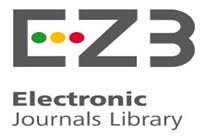IJSEA Archive (Volume 4, Issue 2)
International Journal of Science and Engineering Applications (IJSEA) (Volume 4, Issue 2 March-April 2015)
Automatic Technique for Measuring The Electro-Mechanical Characteristics Of Quantum Tunneling Composites (QTC)
Keywords: QTC, electro-mechanical, piezo-resistance, polymer/graphite composite, compressive capacitance, pressure sensors
Electrically conductive composites consisted of conducting fillers and the insulating polymer matrix. These composites could serve in preparation of piezoresistive composites (i.e. quantum tunnelling composites (QTC) due to their flexibility, light weight, easy processing, low cost, greater resistance changes, and ease of spreading over arbitrary curved surfaces.QTC have attracted tremendous attention due to their potential applications in advanced stress and strain sensors. Recently, various types of conducting materials and many soft polymers have been utilized in the manufacture of QTCs. Characterization of such composites involves several physical parameters. Therefore, a low cost technique was designed and manufactures in order to measure most of electro-mechanical properties of the produced composites with good accuracy and repeatability. QTCs were prepared by mixing poly-dimethyl siloxane (PDMS) and with different concentrations of graphite flakes (1:0.75, 1:1, 1:1.5, 1:1.75 and 1:2). This study declared the efficiency of the suggested technique as well as some fundamental features of the prepared composite. For example, conductivity of the composites containing higher concentration of graphite was found to be independent on rate of pressing during the test. It was also found that the capacitive behavior of the sample interrupted the flow of current at the instant of removing the applied pressure. The suggested setup has several advantages such as simplicity, high accuracy and providing lots of technical data that required for development and confirmation of models for the quantum tunnelling process.
1 -www.nanolab.unimore.it
2 - D. Bloor, A. Graham, E. J. Williams, P. J. Laughlin, and
D. Lussey, “M etal–polymer composite with nanostructured
filler particles and
amplified physical properties,” Applied Physics Letters, vol.
88, no. 10,pp. 102103–102103–3, Mar. (2006).
3 - YWR Amarasinghe1, AL Kulasekera, TGP Priyadarshana,
Seventh International Conference on Sensing
Technology,(2013)
4 - Hussain M., Choa Y.-H., Niihara K. “Conductive rubber
materials for
pressure sensors.” Journal of Materials Science Letters, 20,
pp. 525- 527 (2001)
5 - Ding T., Wang L., Wang P. “Changes in electrical
resistance of carbonblack-
filledsilicone rubber composite during compression.
Journal of Polymer Science Part B:Polymer Physics, 45, pp.
2700-2706(2007)
6 - S. Stefano, G. Canavese, F. Cosiansi, M. Cocuzza, “An
innovative Cupper-PDMS Piezoresistive composite for
flexible tactile sensor” The 15thEUROPEAN CONFERENCE ON COMPOSITE MATERIALS, Venice, Italy, 24-28 June (2012)
7 - Qian Chen, Yingying Sun, Ying Wang, Hongbin Cheng, Qing-Ming Wang, “ZnO nano-wires–polyimide nano-composite piezoresistive strain sensor”,Sensors and Actuators A 190, pp. 161– 167(2013)
8 -WentingCai, Ying Huang, Dayue Wang, Caixia Liu, Yugang Zhang, “Piezoresistive Behaviour of Graphene Nano-platelets/ Carbon Black/ Silicone Rubber Nano-composite” J. APPL. POLYM. SCI. (2013), DOI: 10.1002/APP.39778
@article{El-Tonsy04021009,
title = " Automatic Technique for Measuring The Electro-Mechanical Characteristics Of Quantum Tunneling Composites (QTC) ",
journal = "International Journal of Science and Engineering Applications (IJSEA)",
volume = "4",
number = "2",
pages = "71 - 78",
year = "2015",
author = " M.M. El-Tonsy,H.A. Shaaban ,O.M.Al-Aqbi,R.M. Felfel ",
}










